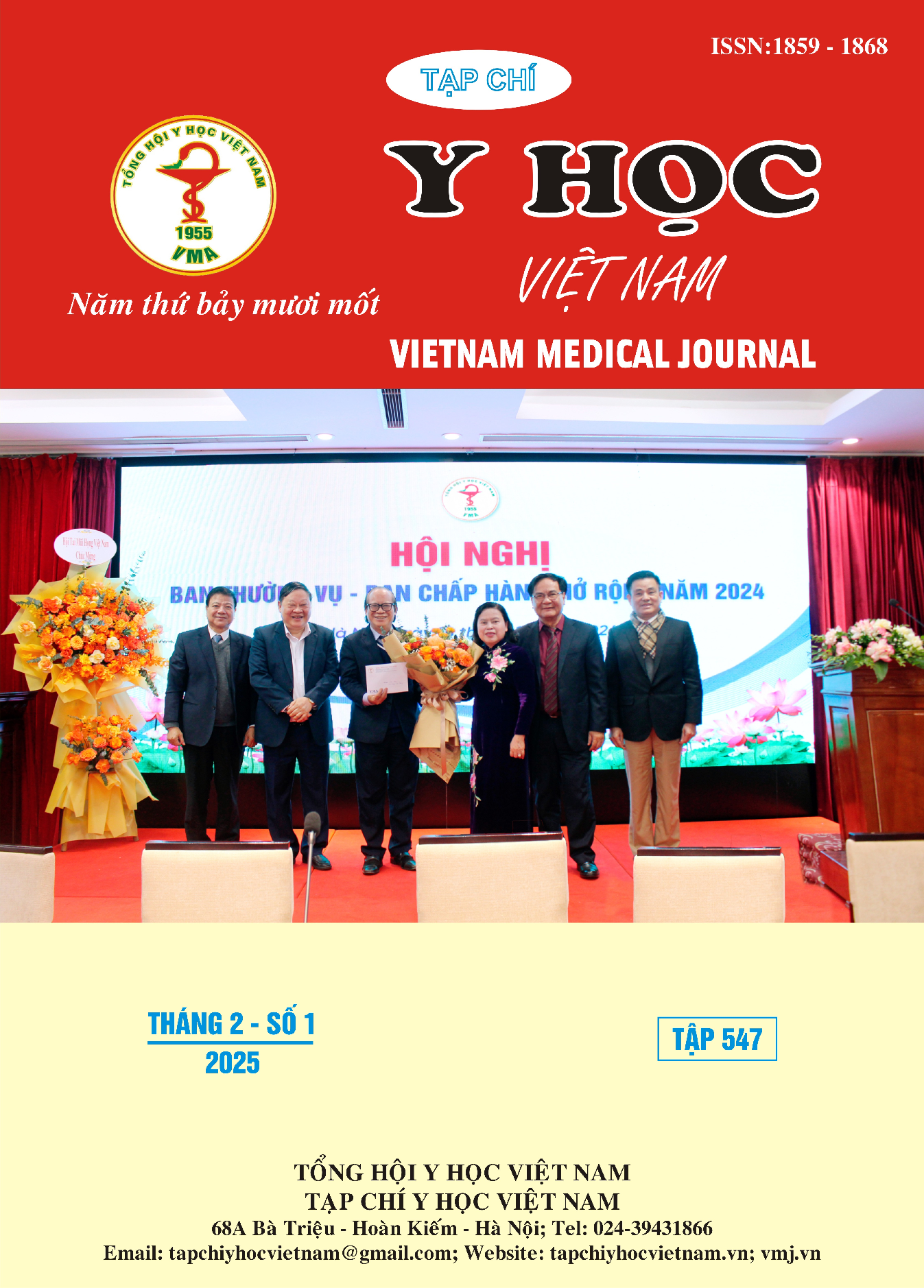VISUAL ACUITY, OPTICAL COHERENCE TOMOGRAPHY CHANGES, AND THE FEASIBILITY OF PREMIUM IOL USE AFTER RETINAL DETACHMENT SURGERY
Main Article Content
Abstract
Purpose: To evaluate functional outcome and changes in optical coherence tomography (OCT) after for retinal detachment (RD) surgey (pars plana vitrectomy – PPV or scleral buckle) and propose IOL selection: monofocal or multifocal IOL selection. Methods: This retrospective study included 85 eyes with successful anatomical outcome after PPV for RD. Data on demographics, preoperative and postoperative visual acuity (VA), and OCT findings at 24 months post-PPV were collected. OCT parameters included central macular thickness, ganglion cell complex (GCC), ellipsoid zone integrity (ISOS), presence of epiretinal membrane, macular edema, sub-retinal fluid (SRF), macular hole, proliferative vitreal retinopathy (PVR) and macula on/off status. The correlation between these OCT features and visual outcomes, as well as the success of premium IOL implantation, was analyzed. Results: The mean baseline VA was 1.55 (SD = 0.96), and VA at 24 months (VA_24) was 0.38 (SD = 0.39). 61(71.8%) eyes monofocal IOL, 11(12.9%) eyes multifocal IOL and 13(15.3%) eyes phakia. The correlation coefficient: VA_24 and ISOS was 0.8, (p < 0.05). VA_24 and GCC was -0.2(p = 0.062). VA_24 and type of IOL was -0.137 (p = 0.21). The R-squared values for the multiple linear regression model predicting VA_24 was approximately 0.59. Significant predictors included ISOS (0.52), baseline VA (-0.009), PVR (0.01), macula on/off (0.05), resolution of SRF (-0.01), macular edema (0.118), macular hole (0.16), and duration of RD (0.001). Conclusion: The integrity of the IS/OS junction is a crucial factor in visual recovery following retinal detachment surgery. Macula-off detachments pose a greater risk of IS/OS disruption, which correlates with poorer visual outcomes, whereas macula-on detachments generally have a better prognosis due to the preservation of the IS/OS junction. Advanced imaging techniques like OCT are essential for postoperative monitoring to predict and evaluate visual recovery [1]. Patients with favorable OCT features post-PPV have better visual function may benefit from multifocal IOLs during subsequent cataract surgery.
Article Details
Keywords
OCT, multifocal IOL, Retinal detachment
References
2. Tani, P., D.M. Robertson, and A. Langworthy, Prognosis for central vision and anatomic reattachment in rhegmatogenous retinal detachment with macula detached. Am J Ophthalmol, 1981. 92(5): p. 611-20.
3. Ahmad, B.U., G.K. Shah, and D.R. Hardten, Presbyopia-correcting intraocular lenses and corneal refractive procedures: a review for retinal surgeons. Retina, 2014. 34(6): p. 1046-54.
4. Ghassemi, F., et al., Foveal Structure in Macula-off Rhegmatogenous Retinal Detachment after Scleral Buckling or Vitrectomy. Journal of Ophthalmic and Vision Research, 2015. 10: p. 172.
5. Örnek, K., Cataract Surgery in Retina Patients, 2013. p. 371-390.
6. Yeu, E. and S. Cuozzo, Matching the Patient to the Intraocular Lens: Preoperative Considerations to Optimize Surgical Outcomes. Ophthalmology, 2021. 128(11): p. e132-e141.


